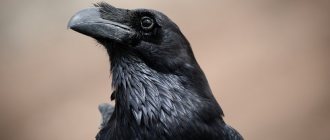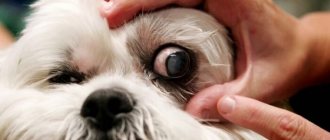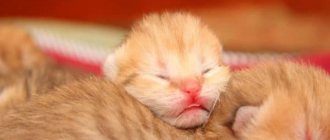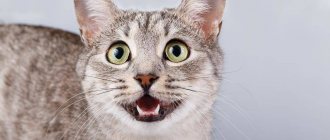As the weather warms up, birds begin to nest in our area. A young generation of birds appears, and the districts are filled with bird chirping and large flocks. And among this spring paradise, only one thing worries many people. As the chicks grow up, they begin to jostle in the nest and, as a result, fall out of it onto the ground. And often this is certain death. What to do with a chick that has fallen out of the nest?
Don't torture nature
If a sparrow chick falls out of the nest, what should you do? Unfortunately, nothing can be done about this. The problem is that in the vast majority of cases, help is not needed in such a situation. This is a necessary stage in the development of many birds (mainly small passerines). Their chicks leave their nests as half-fledged birds. At this time, they are not yet able to fly, but they are already quickly exploring the space around them - they jump from branch to branch, flutter awkwardly. It is precisely these rather lively chicks that people see while walking.
This is what a sparrow chick looks like.
Meaning of the word
The expression jackdaw refers to the name of a chick jackdaw. The lexeme was formed using the suffix -onk, so remember how to write “galchonok” correctly. Following the same spelling standards, other words are written with a diminutive or affectionate, generalizing meaning: wolf - wolf cub, hare - little hare, book - little book, shirt - shirt.
The Russian language is alive, like life itself, and every particle of the lexeme has its own undeniable meaning. Knowing the basics of morphology, being able to parse words according to their composition, dividing them into significant parts is the key to competent writing. And do not forget about the role of suffixes in the process of word formation. With their help, you can translate words from one part of speech to another, they give new shades, meanings, and determine actions and processes.
Signs of "fidgety"
What to do if the chick falls out of the nest? It is not difficult to identify a young sparrow that has fallen from the nest by its appearance: it is already feathered or still covered with growing feathers; The chick is quite large (half the size of an adult sparrow). He is often very lively, opens his mouth and asks for food. The parents did not leave their chick, but only flew away to get food. Of course, while people are near the chick, adult birds will hide. And if you wander around the area for a long time, it is quite possible that the parents may leave the baby to fend for itself.
Small birds
When the chick seems very small and helpless, do not try to help it. Chicks should not be taken home and attempted to be raised like kittens or puppies. What to do if the chick falls out of the nest? There is no need to touch the bird, pick it up or otherwise try to help. Birds such as warblers, warblers, larks, and wagtails create their nests on the ground, and their babies spend the first time in the grass. The presence of people in this regard is undesirable due to the fact that magpies and crows watch the movements of people and can see where they went, track down and kill the chick. Better to leave. If the chick is dry, warm, active, and well-feathered, it does not require help.
Do chicks need to be treated for parasites and worms?
For feathered chicks, I recommend that as soon as the chick begins to eat steadily, treatment against helminths (worms) is carried out, since a very large number of corvid chicks suffer from syngamosis. Chicks become infected with these helminths through earthworms, snails, and slugs. And I immediately recommend treating against ectoparasites - downy eaters, moose flies, ticks.
A magpie chick breathes with an open beak, this is the most common sign of the presence of syngamus helminths in the respiratory system of birds. A chick with such signs requires treatment.
video courtesy of Elena Chizhova.
Read also: What to wear with high top sneakers
Swallow chicks
In the middle zone of the non-black earth region, where most of European Russia is located, other birds, such as swallows, also build nests. Our area is inhabited mainly by the so-called coastal swallows, which live on the banks of reservoirs. Such birds can set up nests in the roofs of houses and gardens, where they will later hatch several chicks.
If swallow chicks fall out of the nest, what should you do? The reasons for chicks falling out of the nest are still little known. According to one version, this can happen through negligence; according to another, parents throw the weakest ones out of the nest so that the rest have more food.
Based on this, it is necessary to act. First you need to put the chick back in its nest. It is important not to hold it in your hands for long. If the bird smells like a human, the parents will not take it in anyway.
If you were unable to place the baby in the nest and you are not afraid of “parental” troubles, you can take the swallow chick with you while it grows up. Taking care of birds will not let you get bored.
The grown chicks will fly away to build their own lives. There is no need to rush them and throw them up. Bird reflexes themselves will tell the kids the time to be in the air. This is what a swallow chick looks like.
So what to do if you pick up a sick chick?
If, after all, the chick is not sick, it will need to be taken back as soon as possible. To do this, you need to remember exactly the place where you take it from; it is advisable to take a photo on your phone. Pay attention to the time at which you picked up the chick, this will come in handy when examining the bird with a doctor. Next, it is advisable to handle the chick depending on the specifics of the injuries it received. If a chick has a broken wing or paw, it is better to touch the bird as little as possible: put it in a small cardboard box, maybe lined with a rag. Small holes should be made in the box for air to enter (the diameter is the same as that of a handle). If a bird has a low temperature, it is better to wrap it in a rag and tuck it behind the collar to warm the chick with the warmth of your body. In other cases (passivity of the chick, problems with the eyes, plumage, etc.), it is recommended to place the sick chick in a small cardboard box, preferably lined with a rag, with holes for air, and take the bird to an ornithologist as soon as possible. The Green Parrot Bird Hospital accepts wild birds; ornithologists will examine the bird and give an opinion on the bird’s condition. If the chick is healthy, the doctor will offer you to transfer it to the Rehabilitation Center from where it will be released into the wild, and if it is sick, it will offer adequate treatment and assistance. The health of your pet is the key to your excellent mood! Sincerely, veterinarians and ornithologists at the Green Parrot bird hospital.
Swifts
And if the swift chicks fall out of the nest, what should you do? First you need to determine their approximate age. Chicks and very young swifts can be distinguished from others by small white edges at the end of their feathers, as well as a light spot on the neck.
Most often, chicks fall out for various reasons. And this is where human help is really needed. When you see that this is a chick, don’t pass by, take it home. The main task is to feed the bird until it is ready to fly on its own. This, depending on the age at which you got the chick, will take several days or weeks, a maximum of a month. Swifts grow quite slowly and, as a rule, become “flightable” six weeks after emergence. However, unlike other chicks, young swifts do not need to be taught - all the necessary skills are inherent in them at the genetic level. This is what a swift chick looks like.
Where to keep and how to warm the chicks?
Unfeathered chicks must be kept warm. The best option is a brooder or incubator. In the absence of a brooder, you can use plastic bottles with warm water, wrapped in a towel (it is important not to overheat the chick!). The chick itself can be kept in a plastic or cardboard bowl covered with several sheets of toilet paper. You can use large sawdust as a base on which to lay sheets of toilet paper, paper or cotton towels. But you should avoid cat litters and sawdust pellets, as such litters are dangerous if the chick ingests the pellets. You should not keep the chick on a slippery surface, as this can lead to the development of “split or helicopter” (this is when the fragile bones of the bird’s paws become deformed).
All chicks must be watered and warm before feeding. You cannot feed a chick if it is dehydrated or if it is hypothermic. The chick must be active, vocalize, open its beak, asking for food. However, adult fledglings may be afraid of humans and may not ask for food at first. At first, such chicks must be force-fed by opening their beaks. Weak, unfeathered chicks may also need to open their beaks by force.
Blackbirds
Blackbirds are useful and interesting birds. But if a blackbird chick falls out of the nest, what should you do? First of all, don't worry. Blackbirds, like other passerines, develop very quickly. For chicks, childhood is divided into two periods: the first - in the nest, the second - on the ground.
It is very easy to see chicks in the thick grass in summer. Having been born after 15-20 days, they strive to get out of the nest into the grass. They don't need people's help. The chicks are in the grass, hiding from predators, waiting for their parents to fly in to feed them, and growing. This is their usual life. Remember that in most cases there is no need to save anyone.
Even if there is immediate danger, for example, your cat decided to diversify its diet or a broken wing, you can take the chick home. But keep in mind that you will have to look after (feed, water, clean the cage) the baby yourself. Birds in captivity are completely helpless. And one more thing - the blackbirds brought may well remain in the house, delighting you with their unique singing for several more years. This is what a blackbird chick looks like.
What to do if you find a baby
Before approaching the chick and picking it up, carefully look around. There are times when the baby does not need help at all. For example, the chicks of the nightingale, thrush, warbler, starling and flycatcher, as soon as their first feathers sprout, leave the parent’s nest. But since they don’t know how to fly yet, they study the nearest area on earth.
Chicks of jackdaws, magpies and tits also arrive. They get out of the house early to learn to look for food in the grass on their own. If you find a jay, wagtail or rook, it is better to put it on a branch and leave. The parents themselves will find their baby and return it to the nest.
Some bird species do not allow their offspring to fall out of the nest. Therefore, if you find a chick of a swallow or swift on the ground, you must immediately provide them with first aid.
Seagulls
Another bird species that people constantly encounter is seagulls. They live almost everywhere where humans have set foot. There are approximately 20 species of sea and river gulls in Russia, and everyone has probably seen these voracious birds or at least heard their piercing screams. It is not uncommon for seagull chicks to fall out of the nest. What to do?
This is a very difficult question. And the answers from nature lovers and ornithologists are very different. But in any case, if you find a gull chick and see that it is healthy, try to put it back in the nest. Birds live in colonies, you can just give him there. Without adults, it will be difficult for the chick to survive.
If you see signs of various diseases or damage, you can take him in, although it will be difficult. Seagulls are not domestic birds, and it is almost impossible to accustom them to life in the house. But if you manage to cure and raise a seagull to adulthood, then your life has not been lived in vain. This is what a seagull chick looks like.
First aid for a chick that has fallen out of the nest
The victim's life is threatened by predators, hunger and hypothermia, but you can protect him from all this. Carefully pick up the bird in your arms, since its bones are very fragile, and wrap it in a scarf or scarf to keep the baby warm.
If you see that blood is coming from the chick’s nostrils, its legs do not move, and one part of the body is paralyzed, then these are all the consequences of hitting the ground. It is better to take the bird to the veterinarian so that he can be provided with specialized drug treatment.
If there is no opportunity to show it to a specialist, then take the chick home and hope that it survives.
Help Wanted
What to do if the chick falls out of the nest? If the situation is critical and you see that the chick may die (regardless of the type of bird), then you have to save it. But you must follow some rules:
- Carefully, but in a very short time, inspect the location of the chick. Sometimes this makes it possible to identify the type of bird.
- Pick up the bird (carefully) and quickly bring it into the house.
- Along the way, inspect the chick for damage. If the baby has clearly visible broken paws, wings, or a blow to the head, then medical help cannot be avoided. In this case, it would be good to seek help from an ornithologist.
- If there are no signs of physical damage, and the general condition of the chick is normal, then it is better not to touch it, but only provide food and shelter - nature will heal itself and it will recover.
- Having brought the chick home, you need to protect it, for safety reasons, from contact with other animals.
What to do with the chick after first aid
If you realize that the chick is really in danger and bring it home, and there you find that it is injured, you must definitely take it to the veterinary clinic.
This is interesting! If help is needed, it will definitely be provided and all the necessary recommendations will be given. After this, the chick can be “nursed.” Chicks grow very quickly and if you do everything correctly, then in about 2-4 weeks your baby will get stronger.
Do not forget that the chick must be slowly accustomed to nutritious food. It is useful for granivorous birds to give porridge and other cereal mixtures, the main thing is no salt. Insectivorous chicks continue to feed on insects.
The main thing to remember is that no matter what efforts you make, a chick raised at home will be much weaker than birds that grew up in natural conditions. Therefore, it is better for him to live in a zoo or at home. In nature, such a bird most likely will not survive, since it will not receive everything that its parents gave it.
This especially applies to birds that feed on insects and predators - no matter how hard you try, you cannot teach them to independently obtain food, hide and defend themselves from natural enemies. In such a situation, it is better to leave the chick at home - your pet will soon adapt to you and bring many pleasant moments.
Important! Remember that the above tips apply to chicks of small breeds of birds. It is better to hand over chicks of larger breeds to a specialist or take them to the nearest zoo or nursery.
After all, caring for them is very complicated and requires special knowledge and experience, without which it will be almost impossible to hatch chicks.
Return to content
How to feed
What to do if the chick falls out of the nest and asks for food? Birds, and especially chicks, have a very fast metabolism. This must be taken into account and feed them often, literally constantly. Otherwise, they will simply die of hunger. At the same time, some of them, especially waterfowl, need water. Representatives of such species need to provide a drinking bowl. The remaining chicks get water from food.
How to care for chicks
It is advisable to take a sick chick to a veterinarian as quickly as possible. Little ones are more susceptible to diseases. Even damage that is slight by human standards can cause death. It is enough to place a healthy baby in suitable conditions so that it gets stronger, but it is better to immediately clarify the breed, since the chick may need special care.
Nest
The nest is usually constructed from a cardboard box with high sides (minimum 10 cm). It is filled with clean sand, straw or hay. Make a small depression in the middle, in which 2-3 napkins are left. They are replaced as needed to maintain hygiene. To prevent the chick from worrying, you can cover the box with gauze and remove it gradually. In most cases, additional heating is not required; it is enough to keep the nest away from drafts. Overheating is more dangerous for babies than hypothermia.
The box must have holes for ventilation
Do not use loose fabric, yarn, threads, etc. as filler. Chicks often become entangled in such materials, which can lead to amputation of fingers.
Nutrition
Small chicks are given insects and their larvae, minced meat, boiled eggs, cottage cheese, and grains. It is important to offer the latter not raw, but soaked or boiled to a pulp. It is strictly forbidden to feed babies bread, seeds, raw cereals, bedbugs, hairy caterpillars and dead insects. You should not catch beetles yourself, as the chick may be poisoned by such food. It is better to purchase live food at a pet store.
If small chicks of any species can be fed with a universal mixture of cottage cheese and eggs, then as they grow older they will have to switch to grain mixtures or insects. To make the right choice, you need to clarify the breed of bird.
Does the chick need to be watered? In most cases, this is not necessary, since the baby receives moisture through food. If you choose dry food (for example, cockroaches), it is acceptable to wet it in water. As a last resort, after each meal the chick is given 3-4 drops of liquid. Adult birds are offered free access to water.
When feeding chicks, the hard parts of insects should be removed; even better, the soft contents should be squeezed out of the shell and fed from a syringe without a needle.
The frequency of feeding depends on the breed and age of the chick, so it is better to check this nuance with a veterinarian. On average, miniature babies need food every 15-20 minutes. A few hours of fasting can cause death. At night they take a break. The last feeding is carried out at approximately 22 o'clock, and the first - at 5-6 o'clock in the morning. If the chick does not eat within 1–2 hours, it is force-fed using tweezers. Food is placed as close to the root of the tongue as possible.
Where to stay
The chick needs to make a shelter, that is, literally build a nest. To do this, you will need a deep bowl or box about 10 cm high. The container needs to be filled with sand, grass, straws, small twigs, soil, pieces of fabric - everything that is usually found in bird nests. Do not fill the nest with cotton wool, fabrics with sparse threads, or knitting yarn. You should lay a paper napkin in two layers in the nest. It will need to be changed after each feeding.
The chick needs to be kept safe. Pets or children should not reach it. There is no need to try to place the chick on a perch or in a closed container. It is better to place the nest in an empty aquarium, covered on top with gauze or mesh, and do not leave it high. Otherwise, the grown chick may go to explore the territory, fall out and injure itself.











